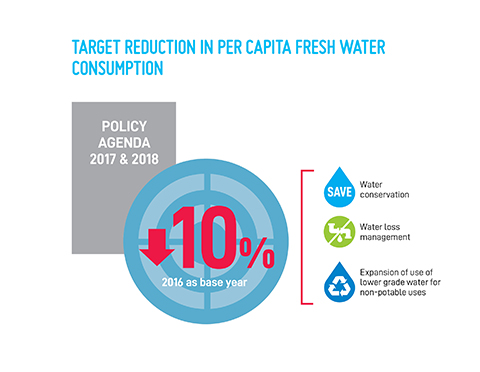
It is the outcome of the “Multi-Criteria Evaluation” that containing fresh water demand growth will be the prioritised water management measure. Moreover, as pledged in the Policy Agenda 2017 and 2018, the Government’s goal is to reduce the average fresh water pcc by 10% by 2030 at the earliest, using 2016 as the base year. We will take forward three main initiatives to achieve this goal, namely, water conservation, water loss management and expansion of use of lower grade water for non-potable purposes.

We have taken gradual steps to migrate WELS for plumbing fixtures and devices from voluntary participation to mandatory implementation in two stages. In Stage 1, it is mandatory to use products of certain water efficiency grade(s) in new plumbing installations for prescribed types of plumbing fixtures and devices under WELS. Starting from February 2018, water efficient products registered under WELS for the types of plumbing fixtures and devices namely showers for bathing, water taps and urinal equipment are required to be used in all plumbing works that require permission from the Water Authority in kitchens in domestic premises and bathrooms and toilets in all premises. In Stage 2, we plan to implement mandatory WELS for the designated types of plumbing fixtures and devices that WELS label is to be affixed to either the products or their packages on sale in the retail market via amendments to the Waterworks Ordinance and Waterworks Regulations.
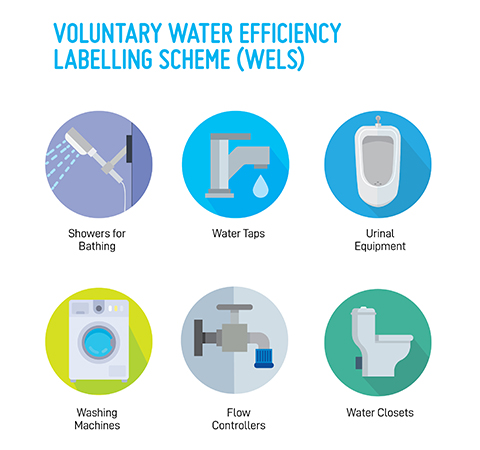
Innovation and technology are key elements in the Strategy 2019. We will use smart technology to facilitate water conservation. We have planned to implement Automatic Meter Reading (AMR) in appropriate, new public and private developments and aim to install about 430,000 smart water meters for the period from 2021 to 2031. In addition to enabling automatic reading of water meters, AMR can provide customers with timely water consumption data and related information. The use of AMR can raise customers’ awareness about water conservation and alert them of abnormal water consumption which may be caused by leakage in water mains inside their premises. Customers could then take early rectification action accordingly.
We will strengthen the culture of water conservation through proactive promotion, education and engagement with the community. We will step up publicity and public education programmes in collaboration with non-government organisations, and strengthen engagement of younger generation. Our school education programmes have already covered secondary and primary schools as well as kindergartens. Since the 2015/16 school year, we have launched “Cherish Water Campus” Integrated Education Programme (“IEP”), which targeted at primary school students. The programme aimed at broadening students’ knowledge about water resources, and raising their awareness of water conservation and water sustainability via integrating theory with practice, such as school water audit, home water audit and education camp on water conservation. To further extend IEP to pre-primary levels, we have also launched the pilot IEP for kindergartens in the 2017/18 school year and fully launched the programme to all kindergartens in the 2018/19 school year. We have also launched a Cherish Water Ambassador Scheme for youngsters in secondary schools and tertiary institutions in 2018. An array of events is tailor-made for the Ambassadors, including Water Treatment Works Guided Tour, short film production workshop and training camp including sharing session with film experts and directors, video competition and in-school promotional activities. All these will educate the Ambassadors the importance of cherishing water resources, fulfilling and publicising the habits of cherishing water. A water resources education centre was commissioned in Tin Shui Wai in late 2019 to enhance public understanding about water resources and water conservation. A territory-wide public activity, “Let’s Save 10L Water” Campaign, is launched since 2014 to encourage the public to pledge to save 10 litres of water every day and implement water-saving practices in daily lives.
For businesses and industries, we will continue to promote the "Best Practice Guidelines on Water Usage" to high water consumption industries including catering and hotel sectors in order to enhance water efficiency. We have also been continuing the installation works of water saving devices (such as water taps, showers for bathing, etc.) in suitable government venues and schools in phases since 2009. Moreover, we will complete the installation of flow controllers at public rental housing estates by mid-2023 to help reduce domestic fresh water consumption. In addition, we are planning to extend the installation to private housing estates and schools. We continue to distribute free water flow controllers to the domestic households via the “Let’s Save 10L Water” Campaign and application for e-Bill service.
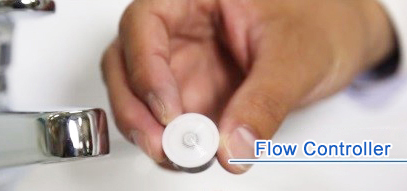
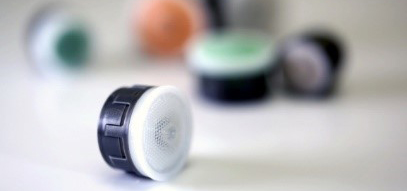
The hilly terrain as well as vibration and disturbances to underground water mains brought by frequent roadworks, busy traffic and congested underground utilities in the city cause higher risks of leakages from the water mains in Hong Kong. We are taking steps to reduce water loss due to leakages from both government and private water mains through various measures. We have set a target of reducing leakage rate of government water mains from about 15% in 2017 to below 10% by 2030.
We are progressively establishing the Water Intelligent Network (WIN). Under WIN, the fresh water distribution network will be divided into about 2,400 District Metering Areas (DMAs) within which monitoring and sensing equipment will be installed. The essence of WIN is to divide the vast fresh water distribution network in the territory into discrete DMAs of manageable size for continuous monitoring of their water loss so as to prioritise them for taking effective network management actions including (a) active leakage detection and control; (b) pressure management to reduce the water supply pressure in the network; (c) quality and speedy repairs to water main leaks and bursts; and (d) reprovisioning of aged water mains which are beyond economical repair. The vast amount of data collected from these DMAs will be analysed with a new Water Intelligent Network Management System which was commissioned in 2020. Besides, in order to enhance the leakage detection work of our water mains, we are exploring various advanced technologies in leakage detection of water mains.
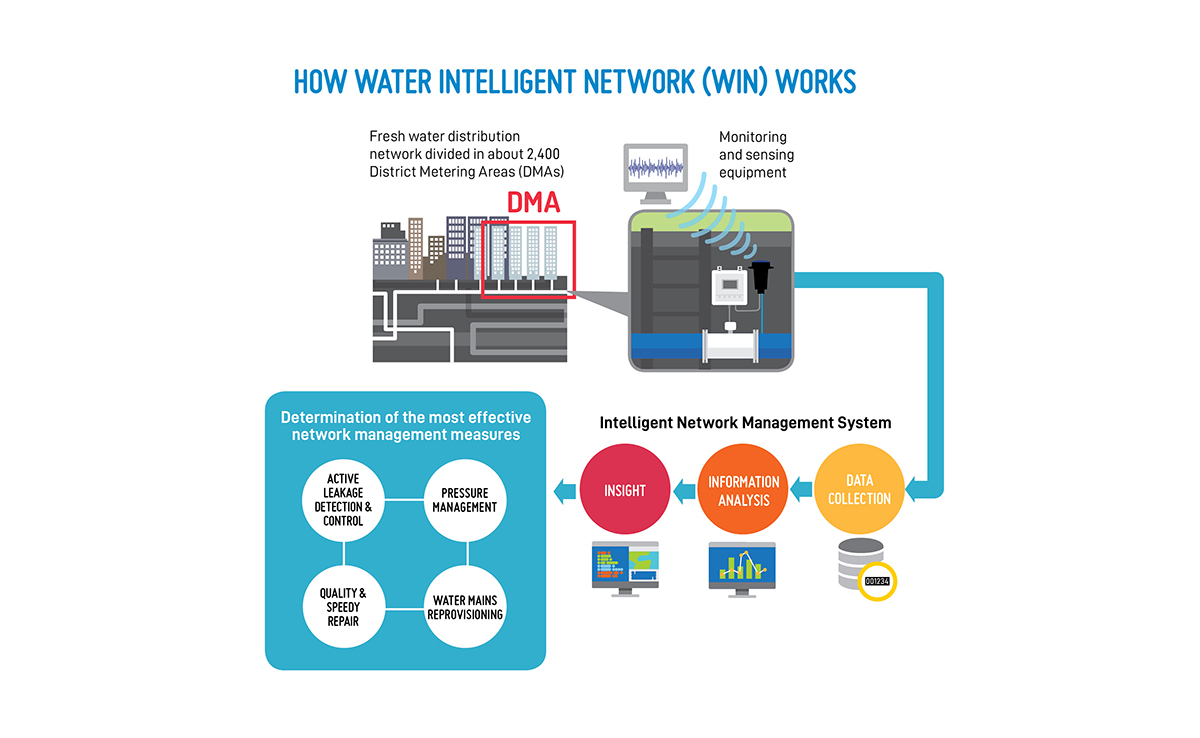
Having drawn on the latest international best practices, we are implementing a strategy for underground asset management of water mains through an optimal balance of cost (including social cost), risk and service levels. Under the underground asset management strategy, we will determine if improvement works are required for each water main in the supply network and prioritise the improvement works on a risk-based approach.
Currently, leakage from private water mains accounts for about 8% of total fresh water consumption in Hong Kong. We will tackle private water main leakage on multiple fronts. First, installation of master meters has been mandated in all new developments with two or more building blocks since 2006. We are also installing master meters in existing developments with an aim to achieving completion of master meter installation for all large housing estates (exceeding 1,000 flats) by 2023. Master meters can help us better monitor water loss of the developments and facilitate our follow up action with suspected leakage in their private communal water mains. Second, we will provide property owners and building management agents with technical advice and support to detect leakage and make subsequent repair to their private communal water mains. In this connection, we will render assistance to the market to develop expertise in leakage detection including personnel and contractors with recognised qualifications. Third, we will step up enforcement through the existing Waterworks Ordinance against water loss in private communal water mains and are exploring options to tackle the water loss problem in private communal water mains through legislative amendments.
Seawater for flushing has been introduced in Hong Kong since the late 1950's. Up till now, Hong Kong is one of the few places extensively applying seawater for flushing. The use of such a sustainable water resource continues to play an important role in Hong Kong’s water resource management. Currently, a total of 300 mcm per annum of seawater is supplied, conserving an equivalent amount of fresh water which is about 20% of the total water consumption in Hong Kong.
We target at expanding the network coverage of using lower grade water for flushing from 85% of the total population to 90% in the long run in order to further reduce the fresh water demand for flushing. Lower grade water refers to seawater and recycled water. Recycled water comprising reclaimed water (produced by further processing treated sewage effluent), treated grey water10 and harvested rainwater is suitable for non-potable purposes. The implementation plan of using recycled water is as follows:
The Shek Wu Hui Sewage Treatment Works will be upgraded into an Effluent Polishing Plant (EPP) by adopting tertiary treatment. We will further process the tertiary treated effluent from the EPP to produce reclaimed water for supply to the northeast New Territories, including Sheung Shui and Fanling currently being supplied with fresh water for flushing, in phases starting from early 2024 onwards. We will further extend the supply of reclaimed water to Kwu Tung North and Fanling North New Development Areas in accordance with their development programmes.
The existing developments in Tung Chung are currently supplied with fresh water for flushing. The seawater flushing systems to the existing Tung Chung New Town and Tung Chung New Town Extension are being implemented in phases for target commissioning in end 2023.
Construction of a district-based grey water recycling system at the Anderson Road Quarry development site commenced in 2020 with a view to collecting grey water in the development and treating the grey water for supply to the development for flushing and other non-potable purposes to match with population intake of the development.
With a view to further reducing the use of fresh water for flushing, we will continue to review the extension of supply of lower grade water to other new development areas and those areas still being supplied with fresh water for flushing and other non-potable purposes to save the precious fresh water resources.
We have also been promoting the use of recycled water for non-potable uses in government buildings as well as private buildings. In line with the Government’s policy on green buildings, works departments would as far as practicable, install rainwater harvesting or grey water recycling systems in government buildings in public works projects. By mid-2021, new buildings of about 115 government projects have been installed with rainwater harvesting or grey water recycling systems. We have also been working with the Hong Kong Green Building Council to promote adoption of recycled water in private buildings through the Building Environmental Assessment Method (BEAM) Plus. Buildings with grey water recycling system or rainwater harvesting system will be eligible for credits under BEAM Plus to encourage private developers to provide these facilities in lieu of using fresh water for non-potable uses.
With the continued implementation of the above demand management measures in respect of water conservation, water loss management and expansion of use of lower grade water for non-potable purposes, it is anticipated that the growth of fresh water demand will be contained and maintained at the level of around 1,000 mcm per annum.
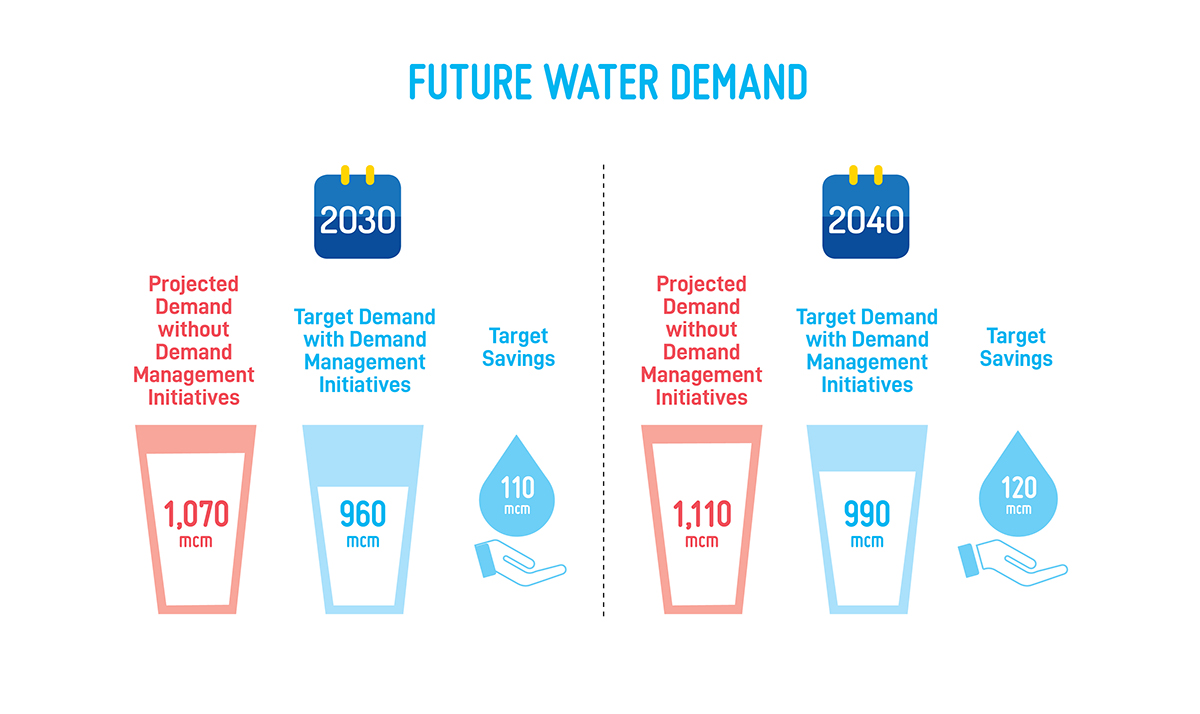
Notes:-
| 10. | Grey water is collected from baths, wash-basins, kitchen sinks, etc. and can be treated for non-potable uses. |